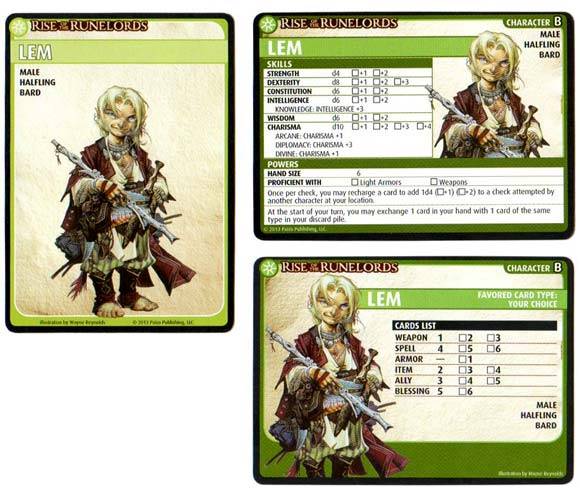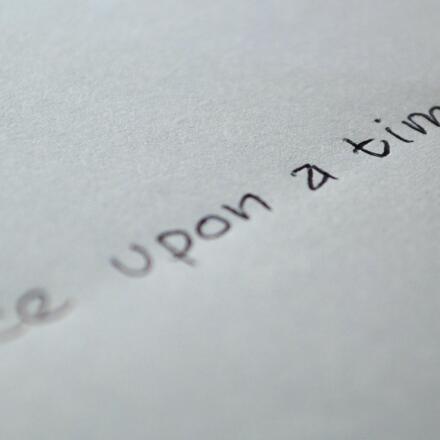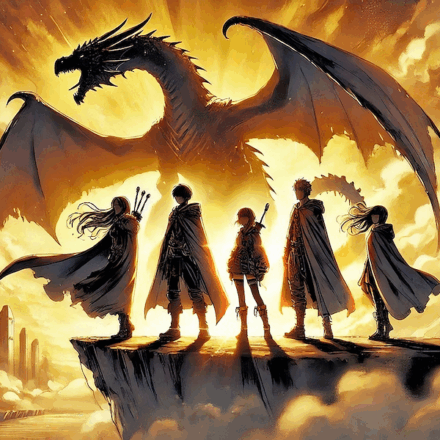Even when your group is lucky enough to have multiple GMs, sometimes you need a backup game in a hurry. Or the GM didn’t have time to prep, but everyone has gathered and is ready for an adventure. There are a lot of solutions in that circumstance–you can wing it, improvising a story on the fly, or play a different roleplaying game like Fiasco or Kingdom that doesn’t rely on a GM’s prep.
 A different solution is to step out of the realm of roleplaying games altogether. Blending a scenario in a box with a mechanically sound board game yields the Pathfinder Adventure Card Game. In this game, you set up an adventure with a villain, the villain’s henchmen, monsters, traps, NPCs you can try to recruit to your team, spells, and items. Each location has a varying mix of each; the general store is long on weapons and armor, but isn’t a place to find scrolls. If you explore the Arcane Academy, however, it’s a great place to find spells… and, sometimes, an ogre lurking in the stacks.
A different solution is to step out of the realm of roleplaying games altogether. Blending a scenario in a box with a mechanically sound board game yields the Pathfinder Adventure Card Game. In this game, you set up an adventure with a villain, the villain’s henchmen, monsters, traps, NPCs you can try to recruit to your team, spells, and items. Each location has a varying mix of each; the general store is long on weapons and armor, but isn’t a place to find scrolls. If you explore the Arcane Academy, however, it’s a great place to find spells… and, sometimes, an ogre lurking in the stacks.
Scratching the Itch
While we’re a group that roleplays together regularly, we don’t do a lot of speaking in character when we play the card game. It’d be great to play with a group that did… but, if you’re at all prone to saying “I hit for seven damage,” the mechanics of the card game are even more central and distracting. And there’s no GM to grant circumstance bonuses for your great oratory.
While it’s not a game for deep roleplaying, it does provide an opportunity for a group of adventurers to take on quests, deploy their resources, overcome obstacles, track down and end the villain’s threat. Even more than module play, you’ve bought into the railroad–but the game delivers on its promise, delivering a tense adventure that has you sweating about the foes you face, and wondering if you’ll be able to overcome the villain’s scheme.
Characters
 Each player begins by picking out one of the iconic characters–Harsk the Ranger, Lem the Bard, and so on. You have two cards for each character; the first card is art with a character background on the back. This card you move around the locations like a mini. The second card you keep in front of you; like a character sheet in a traditional RPG.
Each player begins by picking out one of the iconic characters–Harsk the Ranger, Lem the Bard, and so on. You have two cards for each character; the first card is art with a character background on the back. This card you move around the locations like a mini. The second card you keep in front of you; like a character sheet in a traditional RPG.
The back of the character sheet card lists the cards you build into your personal deck. So Lem picks one weapon, four spells, and so forth, ending up with a selection of 15 cards that represent the character’s resources. Once you’ve built your character’s deck (which you’ll do before the first game and before using a new character, but not often), you flip the card to the other side with your stats, skills, and powers. You’ve finished character generation–you’re ready to play.
Even though everyone who plays Lem will have one weapon and four spells to start, picking out your equipment begins to set a character’s personality. Just like a D&D or Pathfinder game, a bard with lots of illusions and trickery feels very different from an inspiring crusader who wields a sword and buffs his allies. Characters aren’t static, which is great. As you complete adventures, you check the boxes on both sides of your character. So, Lem starts off without armor–but if armor fits your character concept, you can check the armor box when you advance and add some armor into your deck. If you spend most of your time casting spells, you can check that box and add a spell from a scroll that someone in the party discovered (and didn’t expend) during the adventure.
As you continue your adventures, the foes get a little harder, better items can be found in the locations you explore, and characters become better at their specializations. The characters use their new abilities and items to face even tougher foes–and contribute more, whether by launching arrows to aid their friends (as Harsk does), inspiring allies at the same location (as Lem does), healing, wild-shifting, or smiting evil. The character abilities do a good job of reinforcing the feel of a class; when the ranger scouts out the next card, it feels right.
At the end of the night, you return your built deck of cards to the box. When you arrive the next night, you take out your character’s deck, shuffle it, deal out a starting hand and you’re ready to play.
New Developments
There are two big, recent developments for the Pathfinder card game.
The most recent is that the Pathfinder Adventure Card Game is coming to your tablet… sometime. Obsidian and Paizo Announce Partnership. (Their release says they’ll have an early prototype at GenCon.)
The Pathfinder Adventure Card Game is also getting organized play. So when you’re looking to scratch that dungeon raiding itch, you don’t have to round up your own group–you should be able to sit down with total strangers, take out your character’s deck, and take on the week’s adventure.
Final Thoughts
In the end, the card game is a fun activity that isn’t roleplaying, but has enough in common with roleplaying that it’s recognizable. The first game or two feels a little strange, but the internal logic comes quickly to the fore, and characters change often enough that there’s the thrill of advancement. That feeling of progress has us alternating weeks between a Pathfinder game and the Pathfinder card game. They’re very different experiences, but complementary.
Have you played the Pathfinder Adventure Card Game? Do you swear by a different near-roleplaying game like Talisman or Dungeon? Let us know what game you play–and which character is yours, if you’re a Pathfinder card game fan.

















My best friend and I love the Pathfinder card game. I have the game and most of the add on packs for The Rise of the Rune Lords adventure path version and intend to by the new Skulls & Shackles version. (The games follow actual adventure path module series.) We play every chance we get.
My favorite character is the Kiera the cleric. Russ plays Valerios the fighter. They are a potent combination. We have yet to die! I suggest that anyone who plays goes to Paizo for the errata column. It has all the packs as well as the core game and helps a great deal. Happy Adventuring!
I also play Kyra the cleric! I’m looking forward Skull and Shackles; it sounds like you’ll have a few characters from each class to choose from.
We’re going to try the Card Guild [organized play] at the game store; I wonder if there’s much interest in town beyond our group.
I regularly play this with my kids. We have had a couple of false starts with regular RPGs, primarily due to the 8 year age gap between #1 and #3. PACG, on the other hand, has a simple mechanic, and relatively easy text to read. Being a co-op game we help each other out.
I greatly prefer PACG to board games primarily for the co-op aspect (yes, I know the are some co-op board games) but also for the continuity and progression. Each play carries over from the last. Decisions you make in game effect what resources and abilities you’ll have next game.
It is this progression that makes it ‘feel’ like an RPG. Actual gameplay is not very RPG-like. It uses many if the same words, same abilities etc, but the card game mechanic is fundamentally different to true RPG gaming. However, at the end of the game you divide up the loot within the party, decide what to take on the next adventure and increase an ability on your character sheet. This aspect feels like RPG.
The other great aspect is that you don’t need a GM. This makes it a great alternative to regular gaming as it helps prevent GM-burnout. Try running it on alternate weeks, or spend a six-eight week period playing through the entire set, as the GM preps the next session or campaign.
I very highly recommend the game. However, be aware of the cost. I believe it is excellent value for money as it has great re-play-ability, and I’ve been using my set for play with three different groups and for some solo games.
I’m glad you’re enjoying it. I can see it filling that age gap nicely; and the mechanics are simple enough that the older player isn’t running everyone’s hand.
The expense can be an issue–it’s comparative to buying the modules of an adventure path as they come out, plus the core rulebook.
As a lone gamer this game is pretty much ideal. I have taken a long hiatus from TTRPGs and have yet to find a group (moved to a small town with no apparent table top gaming population) so I picked up this game as a stop gap. Awesome. I fill in the adventure and interactions in my head while flipping cards and rolling dice. Almost reminds me of GI Joe’s as a kid.
I play Amiri and Sajan.
Maybe I am a little crazy but their story is developing pretty interestingly in my mind.
As a lone gamer this game is pretty much ideal. I have taken a long hiatus from TTRPGs and have yet to find a group (moved to a small town with no apparent table top gaming population) so I picked up this game as a stop gap. Awesome. I fill in the adventure and interactions in my head while flipping cards and rolling dice. It kind of reminds me of GI Joe’s as a kid.
I play Amiri and Sajan.
Sorry about the double post. I am on my phone up north with poor 3G and it kept saying it couldn’t send my comment… Apparently it could… Twice. Sorry again.